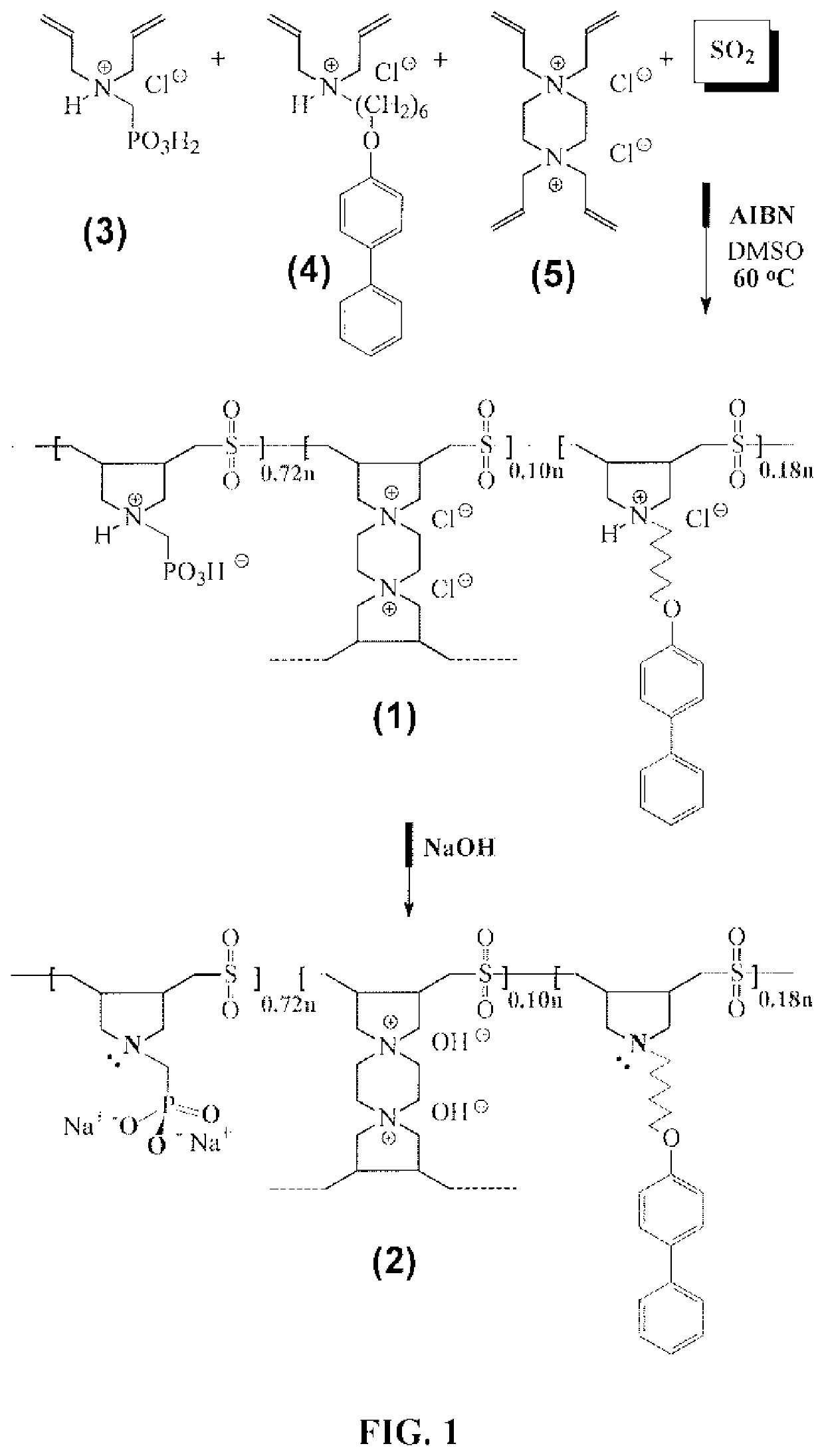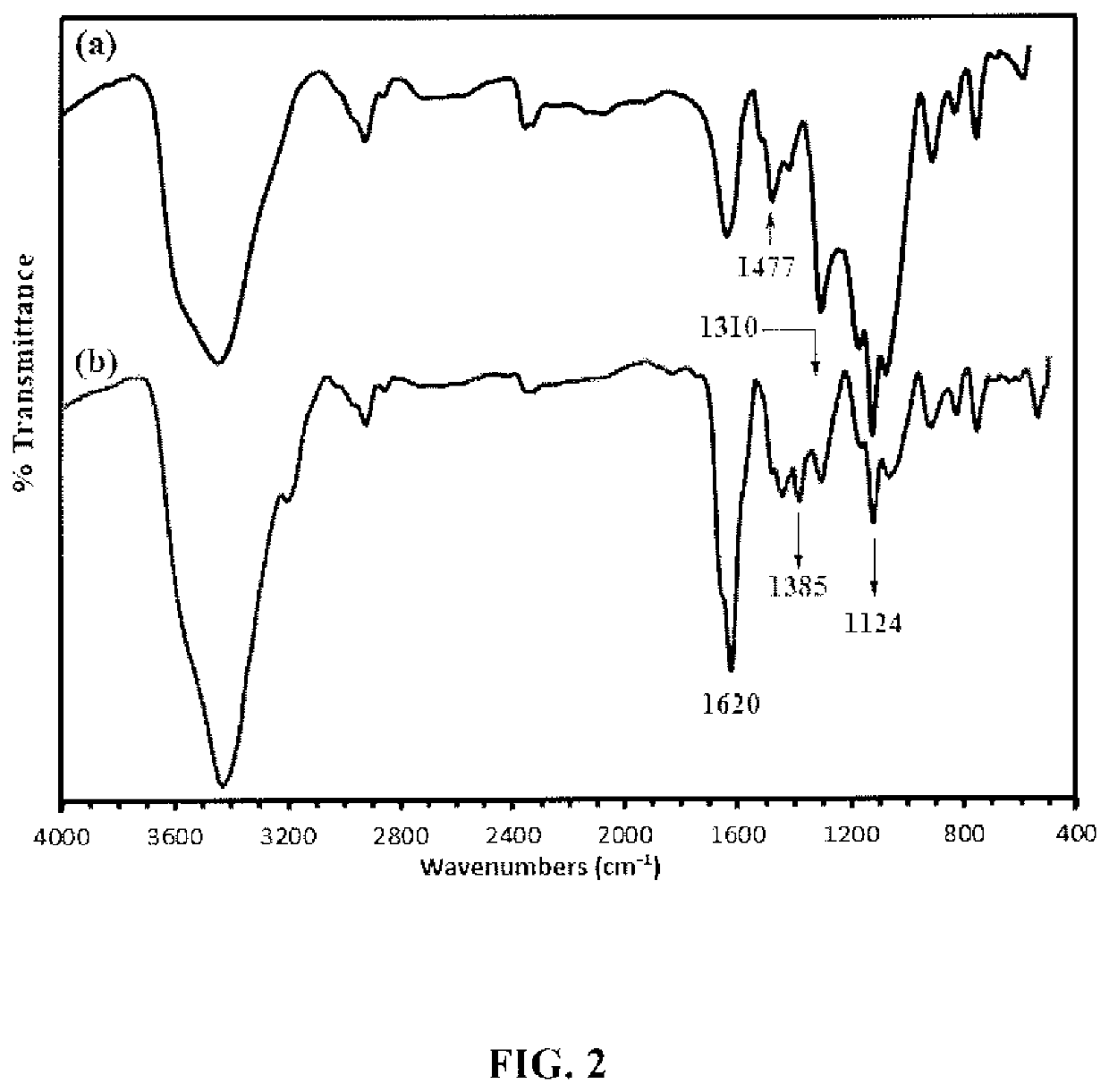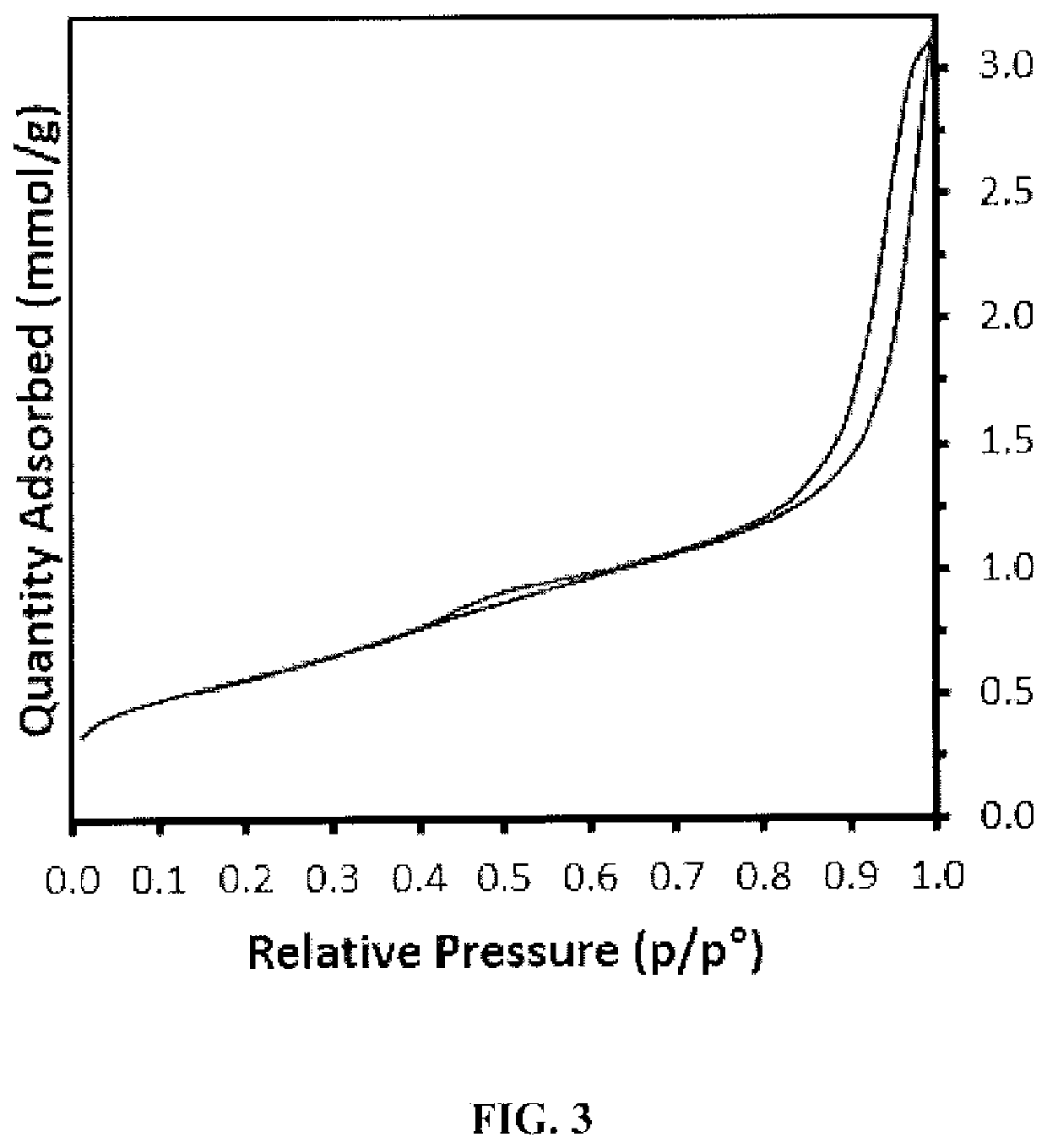Crosslinked polymer resin for contaminant adsorption from water
a crosslinked polymer resin and water technology, applied in specific water treatment objectives, inorganic chemistry, alkali metal oxides/hydroxides, etc., can solve the toxic effect of pollutants in water bodies, neurological disorders, skin diseases, etc., to reduce contaminant concentration and reduce contaminant concentration.
- Summary
- Abstract
- Description
- Claims
- Application Information
AI Technical Summary
Benefits of technology
Problems solved by technology
Method used
Image
Examples
example 1
Experimental
Chemicals and Materials
[0179]Stock solutions of analytical grade Cr(III) nitrate (1,000 mg / L), HNO3, HCl, and NaOH were purchased from Sigma-Aldrich, USA. The standard stock solutions were diluted to the predetermined concentrations for the adsorption tests. 2,2′-Azoisobutyronitrile (AIBN) (from Fluka AG) was crystallized from a chloroform-ethanol mixture. Dimethylsulfoxide (DMSO) was purified by drying with CaH2 and distilling at 64-65° C. and 4 mm Hg. Monomer 3 (≈100% purity), was prepared by a modified procedure which avoided silica gel chromatography. See K. Riedelsberger, W. Jaeger, Polymeric aminomethylphosphonic acids-1. Synthesis and properties in solution. Des. Monomers Polym. 1 (1998) 387-407, incorporated herein by reference in its entirety. Cross-linker 5 was synthesized using a literature procedure. See S. A. Ali, S. Z. Ahmed, Z. Hamad, Cyclopolymerization studies of diallyl- and tetraallylpiperazinium salts. J. Appl. Polym. Sci. 61 91996) 1077-1085, incorpo...
example 2
[0192]The percent removal of Cr(III) at the equilibrium was calculated by the equation:
%Removal=C0-CeC0×100(1)
[0193]Adsorption capacities were calculated using the equations:
qe=(C0-Ce)×Vm(2)andqe=(C0-Ct)×Vm(3)
[0194]In equation (2), the adsorption capacity qe (mg g−1) at equilibrium is the amount of Cr(III) adsorbed per gram of the resin. Meanwhile, in equation (3), the adsorption capacity qt (mg g−1) is the adsorbed Cr(III) (mg) per gram of 1 at time t. Co, Ce, and Ct are the Cr(III) concentrations (mg L−1) initially, at equilibrium, and at time t, respectively. V (L) and m (g) stand for the solution volume and the mass of the resin, respectively.
example 3
Synthesis and Characterization
[0195]A cyclopolymerization protocol was exploited in the AIBN-initiated quadripolymerization of hydrophilic monomer 3, hydrophobic monomer 4 and cross-linker 5, along with SO2 as the fourth alternating monomer to obtain hydrophobic cross-linked polyzwitterionic acid (HCPZA) 1 in 83% yield (FIG. 1). See S. Kudaibergenov, Jaeger W., Laschewsky A., Polymeric Betaines: Synthesis, Characterization and Application, Adv. Polym. Sci. 201 (2006) 157-224; and G. B. Butler, Cyclopolymerization and cyclocopolymerization, Marcel Dekker, New York, 1992, each incorporated herein by reference in their entirety. During the work up, HCl is eliminated to give the zwitterionic aminophosphonate motifs. The composition of the repeating units in the resin matched with the feed ratio of 0.72:0.18:0.10:1.0 for monomers 3:4:5:SO2 as supported by elemental analysis. This elemental analysis indicates a high conversion of the monomers to the resin.
[0196]HCPZA 1, upon treatment wit...
PUM
| Property | Measurement | Unit |
|---|---|---|
| specific surface area | aaaaa | aaaaa |
| pore diameter | aaaaa | aaaaa |
| concentration | aaaaa | aaaaa |
Abstract
Description
Claims
Application Information
 Login to View More
Login to View More - R&D
- Intellectual Property
- Life Sciences
- Materials
- Tech Scout
- Unparalleled Data Quality
- Higher Quality Content
- 60% Fewer Hallucinations
Browse by: Latest US Patents, China's latest patents, Technical Efficacy Thesaurus, Application Domain, Technology Topic, Popular Technical Reports.
© 2025 PatSnap. All rights reserved.Legal|Privacy policy|Modern Slavery Act Transparency Statement|Sitemap|About US| Contact US: help@patsnap.com



